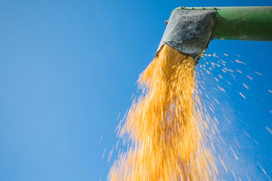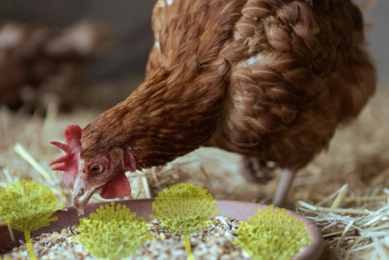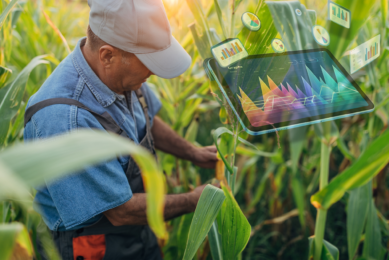Mycotoxin survey: The main risks in 2014

In 2014, the highest threat to livestock ?production due to mycotoxin contamination was observed in North America and South Europe. Globally, DON poses the most ?frequent threat to livestock. These are some of the main conclusions from the Biomin mycotoxin survey.
The latest Biomin Mycotoxin Survey covers 6,844 agricultural commodity samples from 64 countries worldwide and provides regional insights on the main risks caused by the most important mycotoxins in primary feedstuffs in 2014. Over 26,200 analyses have been conducted to identify the presence of mycotoxins worldwide and their potential risk to livestock animal production.
The survey results provide an insight on the incidence of aflatoxins (Afla), zearalenone (ZEN), deoxynivalenol (DON), T-2 toxin (T-2), fumonisins (FUM) and ochratoxin A (OTA) in the primary components used for feed which include corn (maize), wheat, barley, rice, soybean meal, corn gluten meal, dried distillers grains (DDGS) and silage, among others.
Sample analysis
Samples were analysed using liquid chromatography-mass spectrometry/mass spectrometry (LC-MS/MS, Spectrum 380®), high performance liquid chromatography (HPLC) and enzyme-linked immunosorbent assay (ELISA). The latter method was only chosen for single commodities.
Risk levels
Mycotoxin occurrence data for each region is illustrated in the next figure as a percentage of all samples tested. The overall risk level for a particular region is determined by the number of single mycotoxins with average contamination levels (measured in parts per billion, ppb) which lie above the maximum risk threshold levels for livestock (2 ppb for Afla, 10 ppb for OTA, 50 ppb for ZEN and for T-2, 150 ppb for DON and 500 ppb for FUM).

Low and average risk
The risk thresholds proposed are based on worldwide practical experience in the field and in scientific trials that were conducted to reflect as closely as possible field situations and take into account the most sensitive species for each mycotoxin. Low risk indicates that average levels of single mycotoxin presence for a given zone do not exceed minimum recommended thresholds for livestock. The average level does not preclude specific, severe instances of mycotoxin contamination in farm or fields locally, nor does it account for the negative impacts of multiple mycotoxin presence.
Moderate and high risk
Moderate risk indicates the presence of one to two major mycotoxins at levels known to cause harm in animals. High risk indicates the presence of three to four major mycotoxins at levels known to cause harm in animals. Severe risk indicates the presence of five or more major mycotoxins at levels known to cause harm in animals.
Multiple mycotoxins
The global mycotoxin trends rely upon single mycotoxin occurrence which may understate the threat posed by mycotoxins to animals given their known synergistic effects (the presence of multiple mycotoxins compounds the potential harm) and subclinical effects (even low levels of mycotoxin contamination can impair animal health and performance). The highest threat to livestock production due to mycotoxin contamination was observed in North America and South Europe. As in 2013, DON and FUM are once again the main threat and are found in over half of all samples tested worldwide.
DON most frequent threat to lifestock
DON poses the most frequent threat to livestock with a prevalence of 66% and average contamination level of 1,394 ppb. A total of 74% of samples containing DON exceed risk thresholds for livestock. Levels of fumonisins (56% of samples, 1,594 ppb on average) and zearalenone (53% of samples, 221 ppb on average) also present a cause for concern. Half of FUM and ZEN occurrence exceeds risk threshold levels (48% and 54%, respectively).
Aflatoxins were detected in 22% of samples at 64 ppb on average, of which 74% of positive samples exceed risk threshold levels. Positive occurrence was 24% for T-2 toxin at an average of 59 ppb, exceeding recommended levels in 39% of positive cases. Ochratoxin A was found in 20% of samples at 6 ppb on average, exceeding recommended levels one-tenth of the time.
Rise in frequency
Compared to the previous year, the number of samples positive for aflatoxins decreased from 30% in 2013 to 22 % in 2014, though the average concentration nearly doubled from 33 ppb to 64 ppb. The frequency of the other five mycotoxins rose compared to 2013, while the average concentration of zearalenone and deoxynivalenol nearly doubled, to 221 ppb and 1394 ppb, respectively.
Regional insights
The next table provides an overview on the number of samples tested, occurrence, average contamination levels and maximum contamination values. Overall, North America and Europe face the most severe threat of mycotoxin-related risks to livestock, each registering average concentrations for the six major mycotoxins above risk threshold levels. DON is the number one threat in all regions except for South America, where fumonisins constitute the most frequent health risk to livestock.
Feedstuffs
Finished feed and corn (maize) are the commodities most affected by mycotoxins, with the average contamination levels of Afla, ZEN, DON, T-2 and FUM above risk threshold levels for livestock. Deoxynivalenol constitutes the most frequent threat to finished feed, corn, wheat and silage. Although the prevalence of several mycotoxins in wheat were not notably high, the average concentrations of Afla, ZEN, DON and T-2 in wheat samples all exceeded risk threshold levels.
The analysis of the 6,844 samples in this survey clearly indicated that constant monitoring of mycotoxins is important. An effective mycotoxin risk management programme is essential in order to protect animals from the negative impacts of mycotoxins on animals’ health and performance.

There is a lot of information to be found on this subject in AllAboutFeed and on the website. This whitepaper gives you a recap and looks into some of the major symptoms in different animal species. We also look at the strategies that can be used to prevent and eradicate them.













